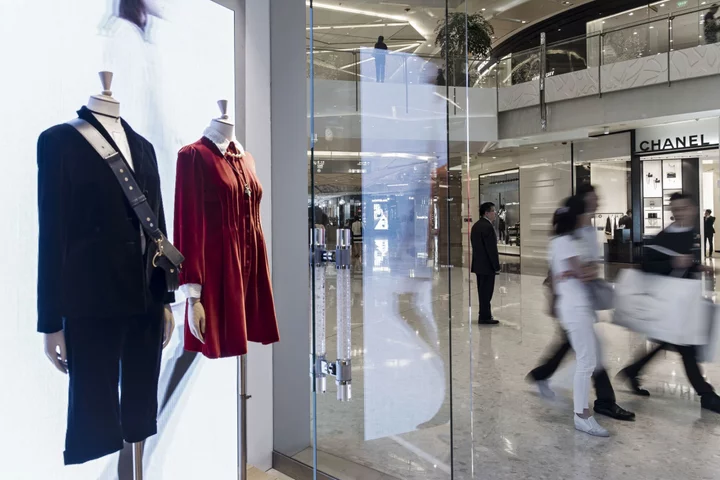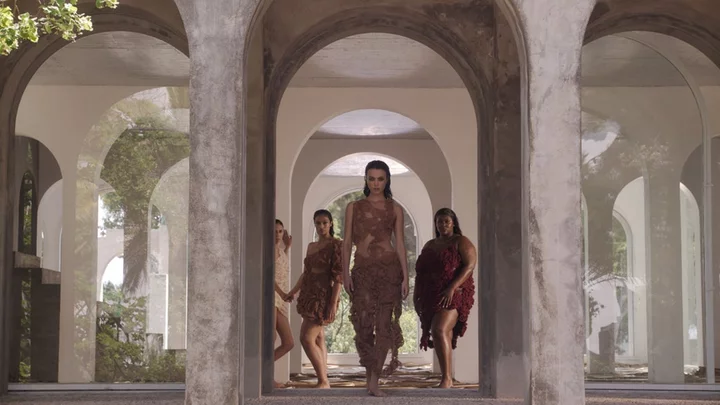Global luxury retailers counting on wealthy Chinese shoppers to raise their sales might be dismayed by recent reports pointing to a slowdown in their appetite for pricey bags and clothes.
There’s been a “decline in optimism” since April among Chinese high-net-worth individuals in the past six months, according to a report released this week by Agility Research & Strategy — a consulting firm focusing on the affluent — which tracks consumer sentiment among wealthy Chinese each month.
Agility surveyed 2,000 affluent Chinese, including more than 600 high new worth individuals who are US dollar millionaires. Poor investment performance — both in real estate and the financial market — took a significant toll on their confidence during the latest quarter, the report said.
An initial rebound in the first quarter of 2023 after China’s reopening from Covid gave way to a “steady downward trend” that’s continued through October, the report said. The wealthier group of 600 turned even less bullish about investments than the others — the first time Agility has seen such a downturn since it began tracking the data in 2016, Agility said.
Read more: China’s Consumers Provide Boost to Economy in Search of Support
“In the China market, as in many others, it’s been a truism that, the wealthier the person, the less impacted they are by shocks and downturns in the economy,” Agility said. “As 2023 has gone on, this appears to have changed.”
Increasingly Cautious
China’s shoppers have grown more cautious in recent months amid economic turbulence fueled by property market crisis and elevated youth unemployment. Deflationary pressures are adding to concerns about the growth trajectory for the world’s second-biggest economy. That could worry a global luxury-goods industry that’s still counting on a rebound in China to fuel future growth and make up for weakness in other key markets.
Read more: China Gen Z Tries to Leisure-Shop Way Out of Jobless Blues
Chinese consumers are expected to contribute 22-24% of worldwide luxury spending this year, according to estimates from Bain & Co., down from 33% in 2019, before the pandemic. That figure is expected to rise to at least 35% in 2030 — topping US shoppers, the world’s second-biggest luxury spenders.
Monthly luxury spending monitoring conducted by HSBC, which mainly measures tax-free shopping, also showed only a “muted recovery” in Chinese consumption. October spending on luxury resumed just around 81% of the 2019 level, it said, without significant improvement from the previous month. Specifically, Chinese spending on luxury in Europe in October only reached 52% of the pre-pandemic level.
Headwinds that will face the €1.5 trillion ($1.6 trillion) global luxury market in the fourth quarter include macroeconomic tensions in China and sparse signs of recovery in the US, according to Bain this week. Challenges hindering Chinese consumer confidence include “normalized” GDP growth rates, swinging real estate markets and increasing youth unemployment, with the China market back up to just 70%-90% of record highs seen in 2021, Bain said.
Luxury bellweather LVMH’s sales in Asia, excluding Japan, grew 11% in the third quarter — well short of estimates, and a sign that China may be weaker than expected. Richemont’s Asia sales were also harmed in recent months by China’s slower-than-expected economic growth, signaling signs of a possible pullback in consumer spending.
Read more: Chinese Prefer Luxury Shopping at Home, Not Abroad, After Covid
The overall luxury goods and apparels segment in Europe reported slower sales growth in the third quarter compared with the first half, with disappointing demand in China and the US causing the slowdown, according to a note from Bloomberg Intelligence’s Laurent Douillet and Tim Craighead this week.









